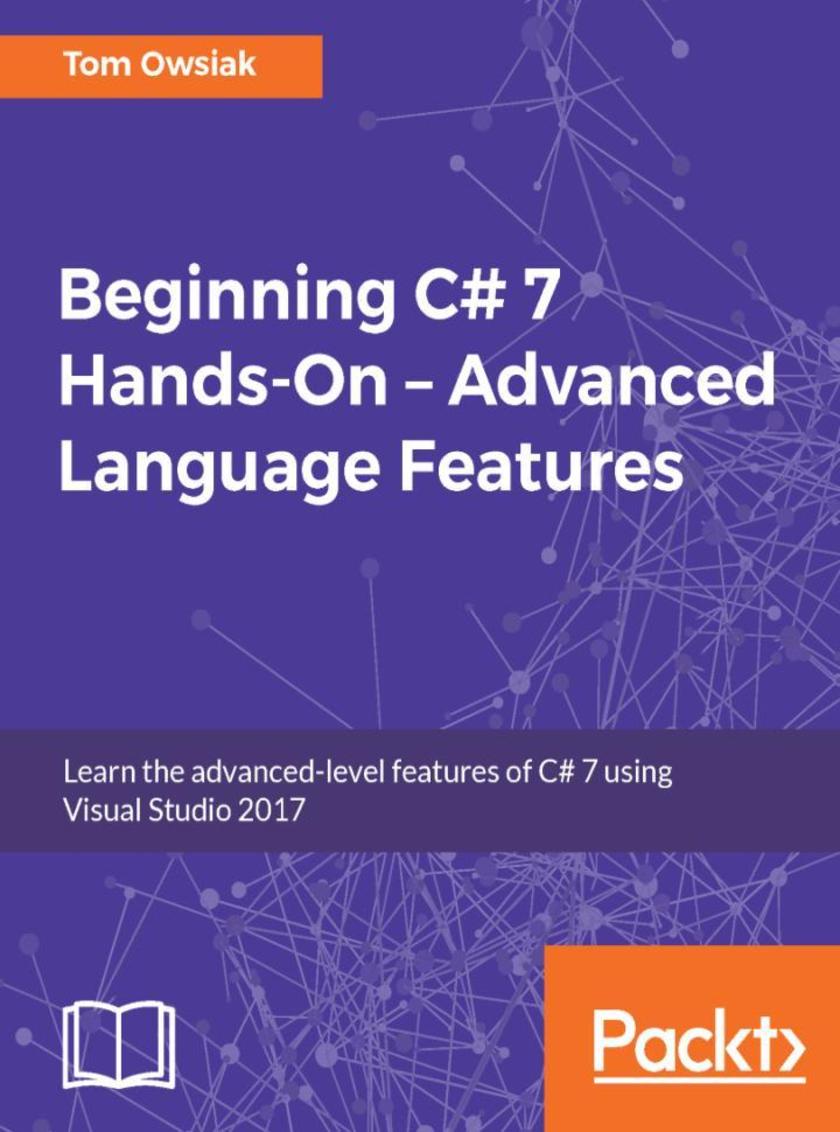
Beginning C# 7 Hands-On – Advanced Language Features
¥71.93
An advanced C# beginners guide to some of the tougher parts of the C# language! About This Book ? Learn C#, Visual Studio, and object-oriented programming ? Get practical examples of advanced C# language features so that you can easily master them yourself ? Use the C# programming language to work generics and lambda expressions ? Program C# and SQL Server 2014 ? Get ready for your first MVC applications Who This Book Is For This book is for anyone who is interested in learning how to program the more advanced aspects of the C# language. Previous programming knowledge of C# is required, at least to the level of basic object-oriented programming. Readers can benefit from first reading Tom Owsiak’s companion book, Beginning C# 7 Hands-On – The Core Language, as a preparation for the more advanced elements and techniques presented in this book. What You Will Learn ? Learn C# advanced language elements and techniques ? Discover advanced C# techniques with hands-on working examples ? Build on your knowledge of OOP by using C# generics and lambda expressions ? Work with C# and LINQ custom data types ? Program C# and SQL Server 2017 to manage and query data ? Create your first full MVC application In Detail Beginning C# 7 Hands-On – Advanced Language Features assumes that you’ve mastered the basic elements of the C# language and that you're now ready to learn the more advanced C# language and syntax, line by line, in a working Visual Studio environment. You'll learn how to code advanced C# language topics including generics, lambda expressions, and anonymous methods. You'll learn to use query syntax to construct queries and deploy queries that perform aggregation functions. Work with C# and SQL Server 2014 to perform complex joins and stored procedures. Explore advanced file access methods, and see how to serialize and deserialize objects – all by writing working lines of code that you can run within Visual Studio. This book is designed for beginner C# developers who have mastered the basics now, and anyone who needs a fast reference to using advanced C# language features in practical coding examples. You'll also take a look at C# through web programming with web forms. By the time you’ve finished this book, you’ll know all the critical advanced elements of the C# language and how to program everything from C# generics to XML, LINQ, and your first full MVC web applications. These are the advanced building blocks that you can then combine to exploit the full power of the C# programming language, line by line. Style and approach A comprehensive book that blends theory with just the right amount of practical code implementations, to help you get up and running with the C# programming language and its advanced features. You’ll also get to work with other tools and technologies that complement C# programming. Each core part of the C# language is coded as you learn, and code output is tested every time to verify the syntax is working as expected, so it’s easy for you to learn directly from the working code examples. Advanced-level features of C# will be used to code and work through examples.
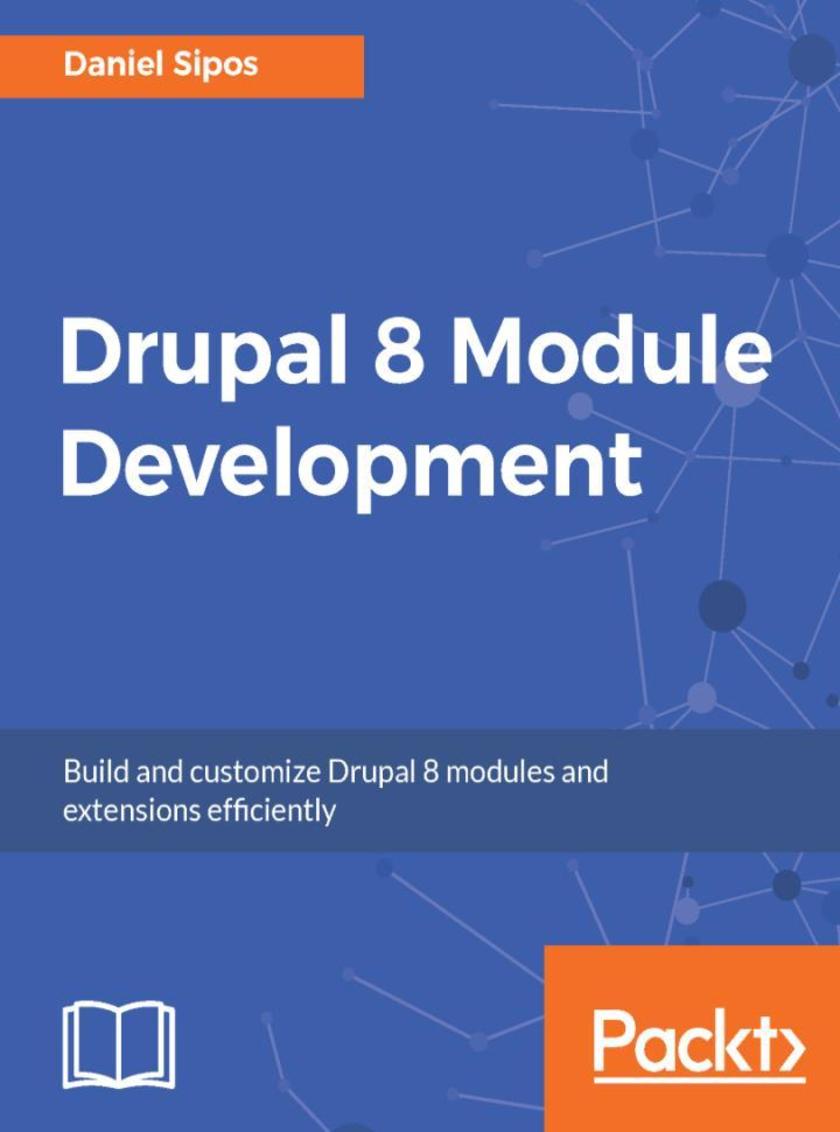
Drupal 8 Module Development
¥80.65
Learn to create and customize impressive Drupal 8 modules to extend your website's functionalities About This Book ? Unleash the power of Drupal 8 programming by creating efficient modules and extensions ? Explore a plethora of Drupal 8 APIs and get the best out of them using the power of PHP coding ? Learn to implement efficient data management and data security by creating dedicated modules for it. Who This Book Is For The primary target of this book is Drupal developers who want to learn how to write modules and carry out development in Drupal 8. It is also intended for Drupal site builders and PHP developers who have basic Object Oriented Programming skills. A little bit of Symfony experience is helpful but not mandatory. What You Will Learn ? Write a Drupal 8 module with custom functionality and hook into various extension points ? Master numerous Drupal 8 sub-systems and APIs ? Model, store, and manipulate data in various ways and for various purposes ? Display data and content in a presentable and secure way ? Learn about the theme system and render arrays In Detail Drupal is an open source web-based content management system (CMS) that can be used for building anything from simple websites to complex applications. It enables individuals and organizations to build platforms that engage users and deliver the right content at the right time. Drupal 8 is an exciting new development in the Drupal community. However, the differences from the previous version are substantial and this can put quite some pressure on Drupal 7 developers that need to catch up. This book aims to help such developers in getting up to speed with Drupal 8 module development. The book first introduces you to the Drupal 8 architecture and its subsystems before diving into creating your first module with basic functionality. Building upon that, you will cover many core APIs and functionalities available to module developers. You will work with the Drupal logging and mailing systems, learn how to output data using the theme layer and work with menus and links programmatically. Then, you will learn how to work with different kinds of data storages, create custom entities, field types and leverage the Database API for lower level database queries. Moreover, you will learn about the Drupal 8 access system and caching layer as well as the APIs used for data processing (queues and batches). You will further see how to introduce java* into your module, work with the various file systems and ensure the code you write works on multilingual sites. Finally, you will learn how to programmatically work with Views, write automated tests for your functionality and also write secure code in general. By the end of the book, you will have learned how to develop your own custom module from scratch that can help solve a small problem or even provide complex functionality. And who knows, maybe you’ll even contribute it back to the Drupal community. Style and approach This book aims to introduce PHP developers to programming concepts specific to Drupal 8 to get them started on writing their own functionality with Drupal 8 and create efficient Drupal 8 modules and extensions.

Python Deep Learning Cookbook
¥80.65
Solve different problems in modelling deep neural networks using Python, Tensorflow, and Keras with this practical guide About This Book ? Practical recipes on training different neural network models and tuning them for optimal performance ? Use Python frameworks like TensorFlow, Caffe, Keras, Theano for Natural Language Processing, Computer Vision, and more ? A hands-on guide covering the common as well as the not so common problems in deep learning using Python Who This Book Is For This book is intended for machine learning professionals who are looking to use deep learning algorithms to create real-world applications using Python. Thorough understanding of the machine learning concepts and Python libraries such as NumPy, SciPy and scikit-learn is expected. Additionally, basic knowledge in linear algebra and calculus is desired. What You Will Learn ? Implement different neural network models in Python ? Select the best Python framework for deep learning such as PyTorch, Tensorflow, MXNet and Keras ? Apply tips and tricks related to neural networks internals, to boost learning performances ? Consolidate machine learning principles and apply them in the deep learning field ? Reuse and adapt Python code snippets to everyday problems ? Evaluate the cost/benefits and performance implication of each discussed solution In Detail Deep Learning is revolutionizing a wide range of industries. For many applications, deep learning has proven to outperform humans by making faster and more accurate predictions. This book provides a top-down and bottom-up approach to demonstrate deep learning solutions to real-world problems in different areas. These applications include Computer Vision, Natural Language Processing, Time Series, and Robotics. The Python Deep Learning Cookbook presents technical solutions to the issues presented, along with a detailed explanation of the solutions. Furthermore, a discussion on corresponding pros and cons of implementing the proposed solution using one of the popular frameworks like TensorFlow, PyTorch, Keras and CNTK is provided. The book includes recipes that are related to the basic concepts of neural networks. All techniques s, as well as classical networks topologies. The main purpose of this book is to provide Python programmers a detailed list of recipes to apply deep learning to common and not-so-common scenarios. Style and approach Unique blend of independent recipes arranged in the most logical manner

C++17 STL Cookbook
¥90.46
Over 90 recipes that leverage the powerful features of the Standard Library in C++17 About This Book ? Learn the latest features of C++ and how to write better code by using the Standard Library (STL). Reduce the development time for your applications. ? Understand the scope and power of STL features to deal with real-world problems. ? Compose your own algorithms without forfeiting the simplicity and elegance of the STL way. Who This Book Is For This book is for intermediate-to-advanced C++ programmers who want to get the most out of the Standard Template Library of the newest version of C++: C++ 17. What You Will Learn ? Learn about the new core language features and the problems they were intended to solve ? Understand the inner workings and requirements of iterators by implementing them ? Explore algorithms, functional programming style, and lambda expressions ? Leverage the rich, portable, fast, and well-tested set of well-designed algorithms provided in the STL ? Work with strings the STL way instead of handcrafting C-style code ? Understand standard support classes for concurrency and synchronization, and how to put them to work ? Use the filesystem library addition available with the C++17 STL In Detail C++ has come a long way and is in use in every area of the industry. Fast, efficient, and flexible, it is used to solve many problems. The upcoming version of C++ will see programmers change the way they code. If you want to grasp the practical usefulness of the C++17 STL in order to write smarter, fully portable code, then this book is for you. Beginning with new language features, this book will help you understand the language’s mechanics and library features, and offers insight into how they work. Unlike other books, ours takes an implementation-specific, problem-solution approach that will help you quickly overcome hurdles. You will learn the core STL concepts, such as containers, algorithms, utility classes, lambda expressions, iterators, and more, while working on practical real-world recipes. These recipes will help you get the most from the STL and show you how to program in a better way. By the end of the book, you will be up to date with the latest C++17 features and save time and effort while solving tasks elegantly using the STL. Style and approach This recipe-based guide will show you how to make the best use of C++ together with the STL to squeeze more out of the standard language

CORS Essentials
¥63.21
Share code and assets across domains in Web applications with CORS About This Book ? A step-by-step guide but at a high level/fast pace. Not all steps are covered as a basic knowledge is assumed ? Provides a basic overview of the concepts but the focus is on providing the practical skills required to develop applications ? Focuses on providing practical examples Who This Book Is For Web developers have been limited by the Same Origin Policy and often wish they could spread their application across different domains. You know JavaScript and AJAX, and have run up against the Same Domain Policy, which is limiting your applications. What You Will Learn ? Why you need CORS: Bending the Same Origin Policy and basic CORS implementation, headers and XMLHttpRequest ? Creating proxies for CORS: Sometimes the header is not enough ? Security: vulnerabilities and how to secure your CORS application ? CORS implementations in Content Management systems ? Learn about CORS in Windows applications ? Take CORS on the Cloud ? Apply CORS in Node.js ? Best practices for CORS In Detail This book explains how to use CORS, including specific implementations for platforms such as Drupal, WordPress, IIS Server, ASP.NET, JBoss, Windows Azure, and Salesforce, as well as how to use CORS in the Cloud on Amazon AWS, YouTube, Mulesoft, and others. It examines limitations, security risks, and alternatives to CORS. It explores the W3C Specification and major developer documentation sources about CORS. It attempts to predict what kinds of extension to the CORS specification, or completely new techniques, will come in the future to address the limitations of CORS Web developers will learn how to share code and assets across domains with CORS. They will learn a variety of techniques that are rather similar in their method and syntax. The book is organized by similar types of framework and application, so it can be used as a reference. Developers will learn about special cases, such as when a proxy is necessary. And they will learn about some alternative techniques that achieve similar goals, and when they may be preferable to using CORS Style and approach A step-by-step guide filled with real-world applications
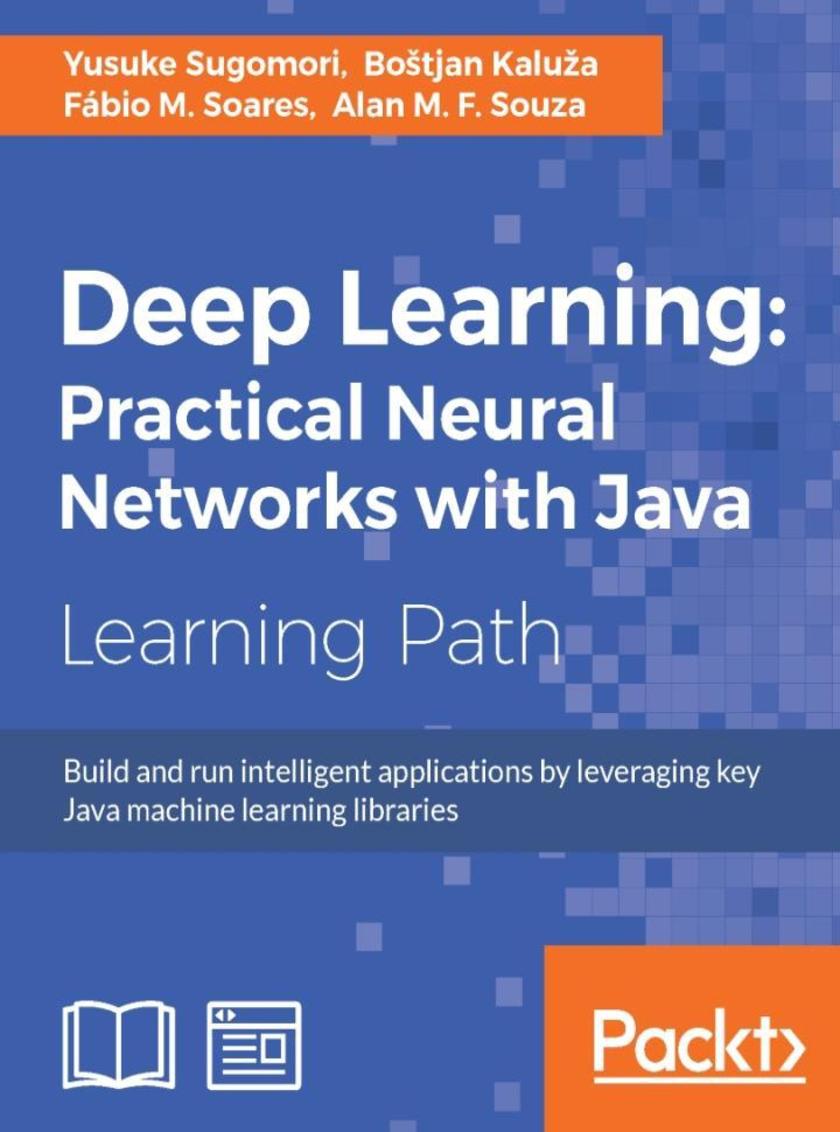
Deep Learning: Practical Neural Networks with Java
¥152.59
Build and run intelligent applications by leveraging key Java machine learning libraries About This Book ? Develop a sound strategy to solve predictive modelling problems using the most popular machine learning Java libraries. ? Explore a broad variety of data processing, machine learning, and natural language processing through diagrams, source code, and real-world applications ? This step-by-step guide will help you solve real-world problems and links neural network theory to their application Who This Book Is For This course is intended for data scientists and Java developers who want to dive into the exciting world of deep learning. It will get you up and running quickly and provide you with the skills you need to successfully create, customize, and deploy machine learning applications in real life. What You Will Learn ? Get a practical deep dive into machine learning and deep learning algorithms ? Explore neural networks using some of the most popular Deep Learning frameworks ? Dive into Deep Belief Nets and Stacked Denoising Autoencoders algorithms ? Apply machine learning to fraud, anomaly, and outlier detection ? Experiment with deep learning concepts, algorithms, and the toolbox for deep learning ? Select and split data sets into training, test, and validation, and explore validation strategies ? Apply the code generated in practical examples, including weather forecasting and pattern recognition In Detail Machine learning applications are everywhere, from self-driving cars, spam detection, document search, and trading strategies, to speech recognitionStarting with an introduction to basic machine learning algorithms, this course takes you further into this vital world of stunning predictive insights and remarkable machine intelligence. This course helps you solve challenging problems in image processing, speech recognition, language modeling. You will discover how to detect anomalies and fraud, and ways to perform activity recognition, image recognition, and text. You will also work with examples such as weather forecasting, disease diagnosis, customer profiling, generalization, extreme machine learning and more. By the end of this course, you will have all the knowledge you need to perform deep learning on your system with varying complexity levels, to apply them to your daily work. The course provides you with highly practical content explaining deep learning with Java, from the following Packt books: 1. Java Deep Learning Essentials 2. Machine Learning in Java 3. Neural Network Programming with Java, Second Edition Style and approach This course aims to create a smooth learning path that will teach you how to effectively use deep learning with Java with other de facto components to get the most out of it. Through this comprehensive course, you’ll learn the basics of predictive modelling and progress to solve real-world problems and links neural network theory to their application
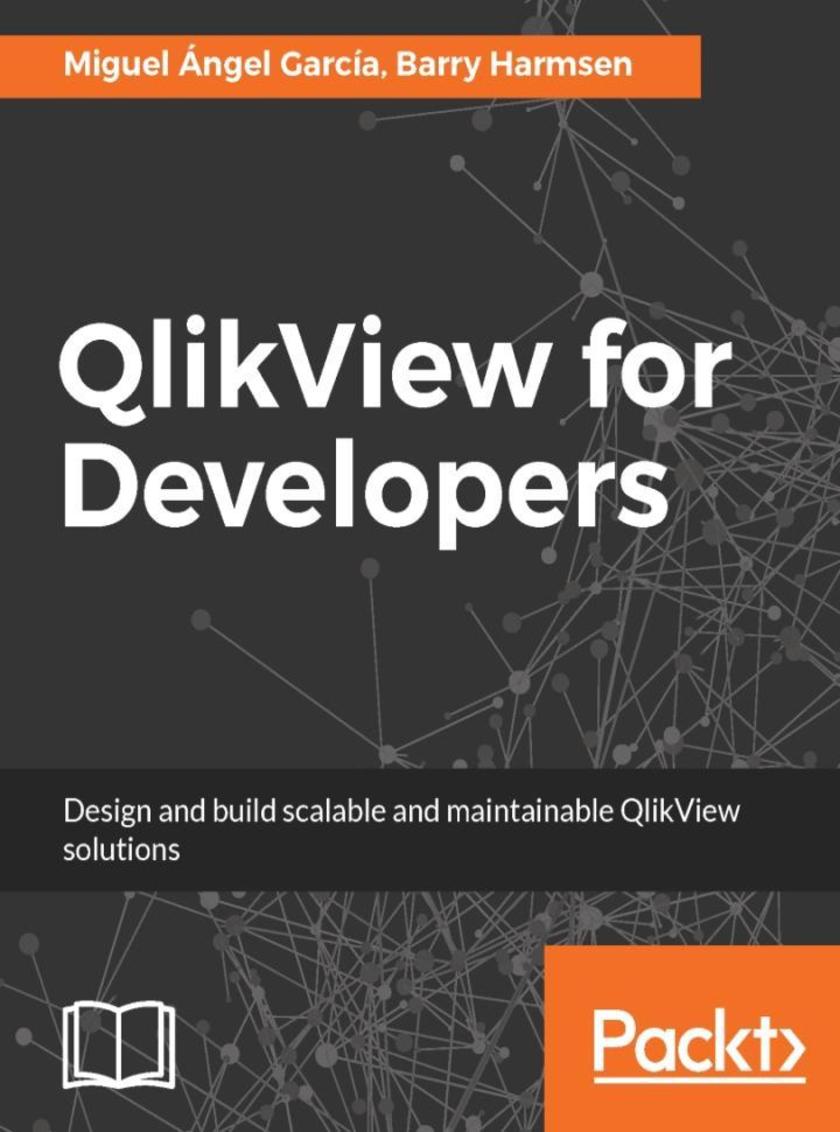
QlikView for Developers
¥116.62
Drive value and insight by developing business critical applications with QlikView 12 About This Book ? Develop your own scalable and maintainable QlikView applications ? Learn time-saving techniques for making your QlikView development more efficient ? A one-stop guide to developing BI applications with QlikView Who This Book Is For This book is for anyone interested in working with QlikView or who has attended QlikView Developer training. The book caters for all QlikView developers, beginners and experts alike, and anyone who wants to improve their QlikView skills. What You Will Learn ? Understand important changes made in QlikView 12 ? Learn the techniques and best practices to transform data in QlikView via *s ? Load data from disparate sources to build an associative Data Model ? Build robust data models and overcome common modeling challenges ? Designing data visualization objects to present performance measures with charts and tables ? Learn to use dimensions and expressions in QlikView objects ? Utilize QlikView's built-in aggregation functions to achieve complex calculations ? Create Point In Time reporting and achieving complex calculations using Set Analysis ? Create a consistent and interactive user interface ? Ensure your QlikView applications and data are protected ? Optimize the QlikView Data Model ? Constructing a data architecture that supports scalable QlikView deployments ? Learn time-saving techniques for making your QlikView development more efficient In Detail QlikView is one of the most flexible and powerful Business Intelligence platforms around. If you want to build data into your organization, build it around QlikView. Don't get caught in the gap between data and knowledge – find out how QlikView can help you unlock insights and data potential with ease. Whether you're new to QlikView or want to get up to speed with the features and functionality of QlikView, this book starts at a basic level and delves more deeply to demonstrate how to make QlikView work for you, and make it meet the needs of your organization. Using a real-world use-case to highlight the extensive impact of effective business analytics, this book might well be your silver bullet for success. A superb hands-on guide to get you started by exploring the fundamentals of QlikView before learning how to successfully implement it, technically and strategically. You'll learn valuable tips, tricks, and insightful information on loading different types of data into QlikView, and how to model it effectively. You will also learn how to write useful *s for QlikView to handle potentially complex data transformations in a way that is simple and elegant. From ensuring consistency and clarity in your data models, to techniques for managing expressions using variables, this book makes sure that your QlikView projects are organized in a way that's most productive for you and key stakeholders. Style and approach This book will help you learn QlikView Development from a basic to a practitioner level using a step-by-step approach. It is smartly built around a practical case study – HighCloud Airlines – to help you gain an in-depth understanding of how to build applications for Business Intelligence using QlikView.
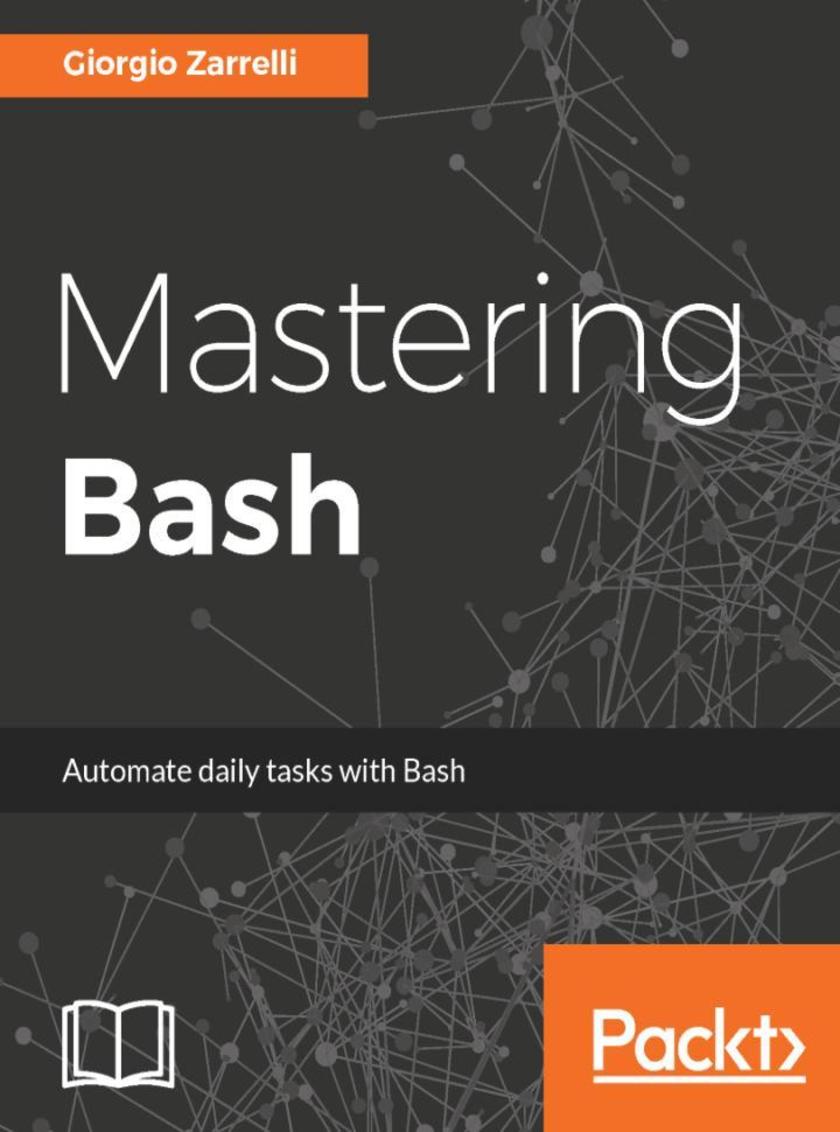
Mastering Bash
¥80.65
Your one stop guide to making the most out of Bash programming About This Book ? From roots to leaves, learn how to program in Bash and automate daily tasks, pouring some spice in your *s ? Daemonize a * and make a real service of it, ensuring it’s available at any time to process user-fed data or commands ? This book provides functional examples that show you practical applications of commands Who This Book Is For If you're a power user or system administrator involved in writing Bash *s to automate tasks, then this book is for you. This book is also ideal for advanced users who are engaged in complex daily tasks. What You Will Learn ? Understand Bash right from the basics and progress to an advanced level ? Customise your environment and automate system routine tasks ? Write structured *s and create a command-line interface for your *s ? Understand arrays, menus, and functions ? Securely execute remote commands using ssh ? Write Nagios plugins to automate your infrastructure checks ? Interact with web services, and a Slack notification * ? Find out how to execute subshells and take advantage of parallelism ? Explore inter-process communication and write your own daemon In Detail System administration is an everyday effort that involves a lot of tedious tasks, and devious pits. Knowing your environment is the key to unleashing the most powerful solution that will make your life easy as an administrator, and show you the path to new heights. Bash is your Swiss army knife to set up your working or home environment as you want, when you want. This book will enable you to customize your system step by step, making your own real, virtual, home out of it. The journey will take you swiftly through the basis of the shell programming in Bash to more interesting and challenging tasks. You will be introduced to one of the most famous open source monitoring systems—Nagios, and write complex programs with it in any languages. You’ll see how to perform checks on your sites and applications. Moving on, you’ll discover how to write your own daemons so you can create your services and take advantage of inter-process communication to let your *s talk to each other. So, despite these being everyday tasks, you’ll have a lot of fun on the way. By the end of the book, you will have gained advanced knowledge of Bash that will help you automate routine tasks and manage your systems. Style and approach This book presents step-by-step instructions and expert advice on working with Bash and writing *s. Starting from the basics, this book serves as a reference manual where you can find handy solutions and advice to make your *s flexible and powerful.

Modern C++ Programming Cookbook
¥90.46
Over 100 recipes to help you overcome your difficulties with C++ programming and gain a deeper understanding of the working of modern C++ About This Book ? Explore the most important language and library features of C++17, including containers, algorithms, regular expressions, threads, and more, ? Get going with unit testing frameworks Boost.Test, Google Test and Catch, ? Extend your C++ knowledge and take your development skills to new heights by making your applications fast, robust, and scalable. Who This Book Is For If you want to overcome difficult phases of development with C++ and leverage its features using modern programming practices, then this book is for you. The book is designed for both experienced C++ programmers as well as people with strong knowledge of OOP concepts. What You Will Learn ? Get to know about the new core language features and the problems they were intended to solve ? Understand the standard support for threading and concurrency and know how to put them on work for daily basic tasks ? Leverage C++’s features to get increased robustness and performance ? Explore the widely-used testing frameworks for C++ and implement various useful patterns and idioms ? Work with various types of strings and look at the various aspects of compilation ? Explore functions and callable objects with a focus on modern features ? Leverage the standard library and work with containers, algorithms, and iterators ? Use regular expressions for find and replace string operations ? Take advantage of the new filesystem library to work with files and directories ? Use the new utility additions to the standard library to solve common problems developers encounter including string_view, any , optional and variant types In Detail C++ is one of the most widely used programming languages. Fast, efficient, and flexible, it is used to solve many problems. The latest versions of C++ have seen programmers change the way they code, giving up on the old-fashioned C-style programming and adopting modern C++ instead. Beginning with the modern language features, each recipe addresses a specific problem, with a discussion that explains the solution and offers insight into how it works. You will learn major concepts about the core programming language as well as common tasks faced while building a wide variety of software. You will learn about concepts such as concurrency, performance, meta-programming, lambda expressions, regular expressions, testing, and many more in the form of recipes. These recipes will ensure you can make your applications robust and fast. By the end of the book, you will understand the newer aspects of C++11/14/17 and will be able to overcome tasks that are time-consuming or would break your stride while developing. Style and approach This book follows a recipe-based approach, with examples that will empower you to implement the core programming language features and explore the newer aspects of C++.
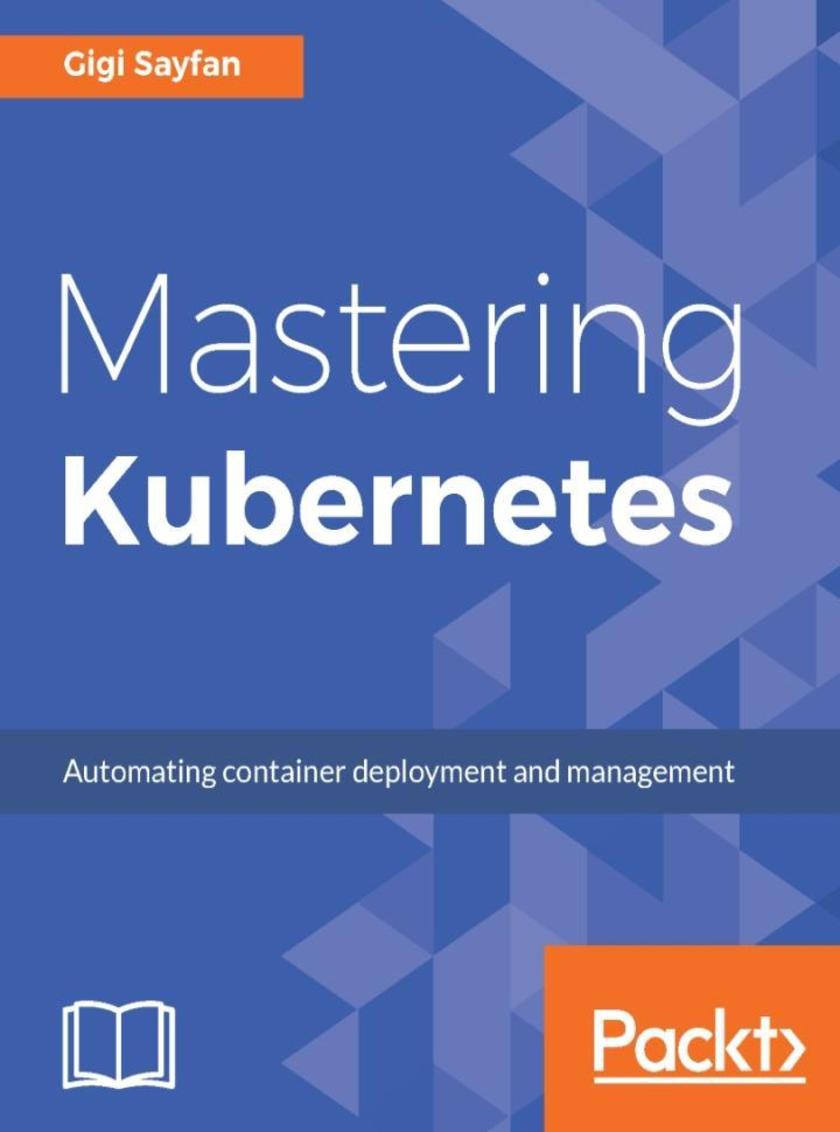
Mastering Kubernetes
¥90.46
Master the art of container management utilizing the power of Kubernetes. About This Book ? This practical guide demystifies Kubernetes and ensures that your clusters are always available, scalable, and up to date ? Discover new features such as autoscaling, rolling updates, resource quotas, and cluster size ? Master the skills of designing and deploying large clusters on various cloud platforms Who This Book Is For The book is for system administrators and developers who have intermediate level of knowledge with Kubernetes and are now waiting to master its advanced features. You should also have basic networking knowledge. This advanced-level book provides a pathway to master Kubernetes. What You Will Learn ? Architect a robust Kubernetes cluster for long-time operation ? Discover the advantages of running Kubernetes on GCE, AWS, Azure, and bare metal ? See the identity model of Kubernetes and options for cluster federation ? Monitor and troubleshoot Kubernetes clusters and run a highly available Kubernetes ? Create and configure custom Kubernetes resources and use third-party resources in your automation workflows ? Discover the art of running complex stateful applications in your container environment ? Deliver applications as standard packages In Detail Kubernetes is an open source system to automate the deployment, scaling, and management of containerized applications. If you are running more than just a few containers or want automated management of your containers, you need Kubernetes. This book mainly focuses on the advanced management of Kubernetes clusters. It covers problems that arise when you start using container orchestration in production. We start by giving you an overview of the guiding principles in Kubernetes design and show you the best practises in the fields of security, high availability, and cluster federation. You will discover how to run complex stateful microservices on Kubernetes including advanced features as horizontal pod autoscaling, rolling updates, resource quotas, and persistent storage back ends. Using real-world use cases, we explain the options for network configuration and provides guidelines on how to set up, operate, and troubleshoot various Kubernetes networking plugins. Finally, we cover custom resource development and utilization in automation and maintenance workflows. By the end of this book, you’ll know everything you need to know to go from intermediate to advanced level. Style and approach Delving into the design of the Kubernetes platform, the reader will be exposed to the advanced features and best practices of Kubernetes. This book will be an advanced level book which will provide a pathway to master Kubernetes
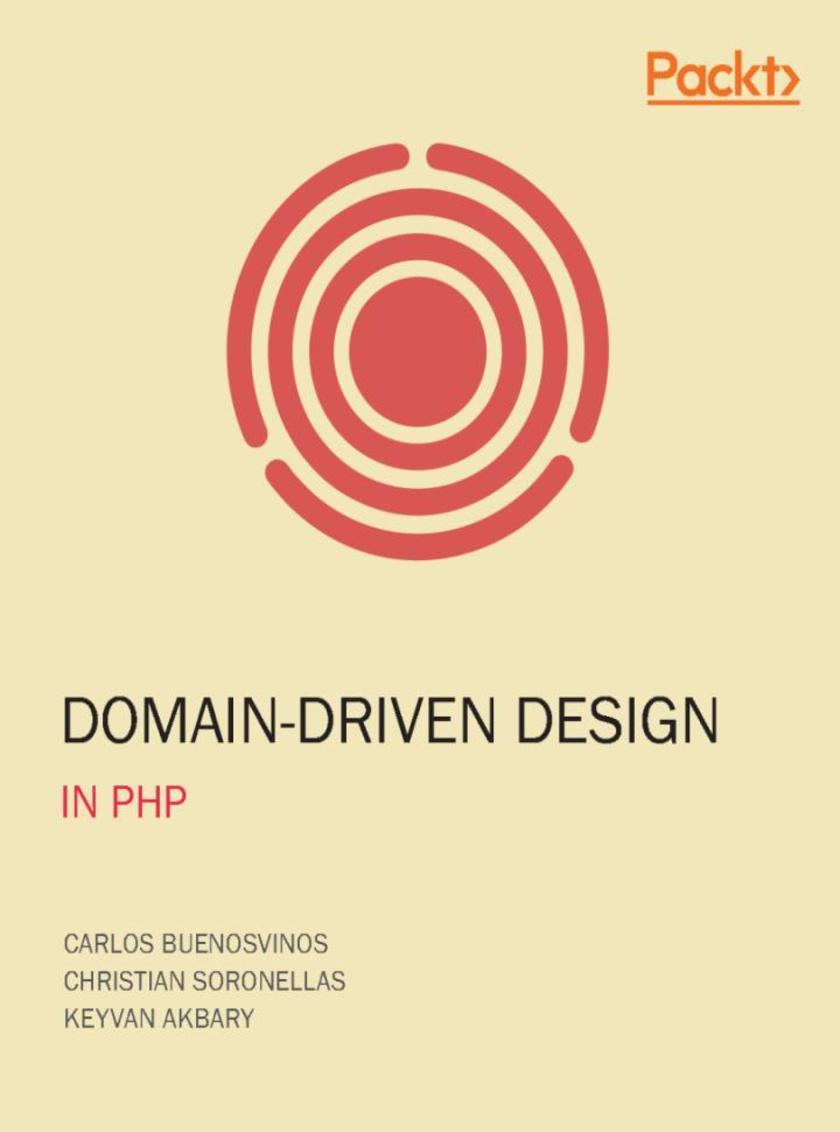
Domain-Driven Design in PHP
¥90.46
Real examples written in PHP showcasing DDD Architectural Styles, Tactical Design, and Bounded Context Integration About This Book ? Focuses on practical code rather than theory ? Full of real-world examples that you can apply to your own projects ? Shows how to build PHP apps using DDD principles Who This Book Is For This book is for PHP developers who want to apply a DDD mindset to their code. You should have a good understanding of PHP and some knowledge of DDD. This book doesn’t dwell on the theory, but instead gives you the code that you need. What You Will Learn ? Correctly design all design elements of Domain-Driven Design with PHP ? Learn all tactical patterns to achieve a fully worked-out Domain-Driven Design ? Apply hexagonal architecture within your application ? Integrate bounded contexts in your applications ? Use REST and Messaging approaches In Detail Domain-Driven Design (DDD) has arrived in the PHP community, but for all the talk, there is very little real code. Without being in a training session and with no PHP real examples, learning DDD can be challenging. This book changes all that. It details how to implement tactical DDD patterns and gives full examples of topics such as integrating Bounded Contexts with REST, and DDD messaging strategies. In this book, the authors show you, with tons of details and examples, how to properly design Entities, Value Objects, Services, Domain Events, Aggregates, Factories, Repositories, Services, and Application Services with PHP. They show how to apply Hexagonal Architecture within your application whether you use an open source framework or your own. Style and approach This highly practical book shows developers how to apply domain-driven design principles to PHP. It is full of solid code examples to work through.
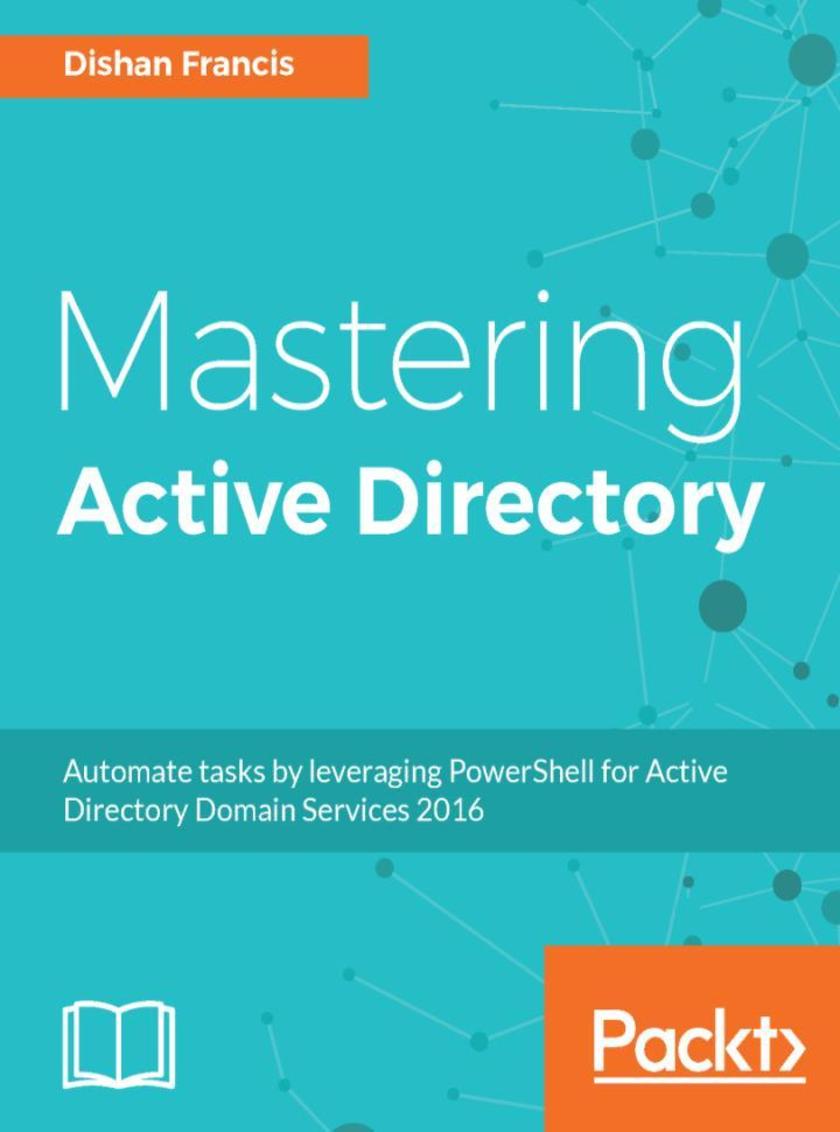
Mastering Active Directory
¥107.90
Become a master at managing enterprise identity infrastructure by leveraging Active Directory About This Book ? Manage your Active Directory services for Windows Server 2016 effectively ? Automate administrative tasks in Active Directory using PowerShell ? Manage your organization's network with ease Who This Book Is For If you are an Active Directory administrator, system administrator, or network professional who has basic knowledge of Active Directory and are looking to gain expertise in this topic, this is the book for you. What You Will Learn ? Explore the new features in Active Directory Domain Service 2016 ? Automate AD tasks with PowerShell ? Get to know the advanced functionalities of the schema ? Learn about Flexible Single Master Operation (FSMO) roles and their placement ? Install and migrate Active directory from older versions to Active Directory 2016 ? Manage Active Directory objects using different tools and techniques ? Manage users, groups, and devices effectively ? Design your OU structure in the best way ? Audit and monitor Active Directory ? Integrate Azure with Active Directory for a hybrid setup In Detail Active Directory is a centralized and standardized system that automates networked management of user data, security, and distributed resources and enables interoperation with other directories. If you are aware of Active Directory basics and want to gain expertise in it, this book is perfect for you. We will quickly go through the architecture and fundamentals of Active Directory and then dive deep into the core components, such as forests, domains, sites, trust relationships, OU, objects, attributes, DNS, and replication. We will then move on to AD schemas, global catalogs, LDAP, RODC, RMS, certificate authorities, group policies, and security best practices, which will help you gain a better understanding of objects and components and how they can be used effectively. We will also cover AD Domain Services and Federation Services for Windows Server 2016 and all their new features. Last but not least, you will learn how to manage your identity infrastructure for a hybrid-cloud setup. All this will help you design, plan, deploy, manage operations on, and troubleshoot your enterprise identity infrastructure in a secure, effective manner. Furthermore, I will guide you through automating administrative tasks using PowerShell cmdlets. Toward the end of the book, we will cover best practices and troubleshooting techniques that can be used to improve security and performance in an identity infrastructure. Style and approach This step-by-step guide will help you master the core functionalities of Active Directory services using Microsoft Server 2016 and PowerShell, with real-world best practices at the end.

Mastering Java EE Development with WildFly
¥90.46
Your one stop solution to create highly scalable enterprise grade Java applications with WildFly. About This Book ? Master Java EE development with the latest WildFly 10 application server. ? Integrate with JSF and JMS and use efficient load balancing techniques to create real-time apps ? Integrate your backend JavaScript code seamlessly into Java applications Who This Book Is For If you are a Java developer with at least basic knowledge of Java EE, then this book is for you. No previous knowledge of WildFly is required. What You Will Learn ? Configure the development environment along with native and cloud installation of WildFly ? Write a DB schema and the relative entities and how to use the relationships between the entities ? Analyze with examples all the java annotations to manage the EJB and the configuration to get better performances ? Write different REST services through the EJB ? Implement Web sockets 1.0 and know why and when use the web sockets ? Work with Active MQ and write JMS clients to manage the authentication and authorization in the clients ? Configure the mail server through the wildfly console ? Learn how and when to use a new feature JAX-RS 2.0, which is the asynchronous call through REST ? Use the new JSF features of Wildfly 10 such as Mojarra 2.2, JSF 2.2, Richfaces 4.5 In Detail Packed with rich assets and APIs, Wildfly 10 allows you to create state-of-the-art Java applications. This book will help you take your understanding of Java EE to the next level by creating distributed Java applications using Wildfly. The book begins by showing how to get started with a native installation of WildFly and it ends with a cloud installation. After setting up the development environment, you will implement and work with different WildFly features, such as implementing JavaServer Pages. You will also learn how you can use clustering so that your apps can handle a high volume of data traffic. You will also work with enterprise JavaBeans, solve issues related to failover, and implement Java Message Service integration. Moving ahead, you will be working with Java Naming and Directory Interface, Java Transaction API, and use ActiveMQ for message relay and message querying. This book will also show you how you can use your existing backend JavaScript code in your application. By the end of the book, you’ll have gained the knowledge to implement the latest Wildfly features in your Java applications. Style and approach Each part of this book shows you how to use different features of WildFly 10 to create enterprise grade Java applications as easily as possible.
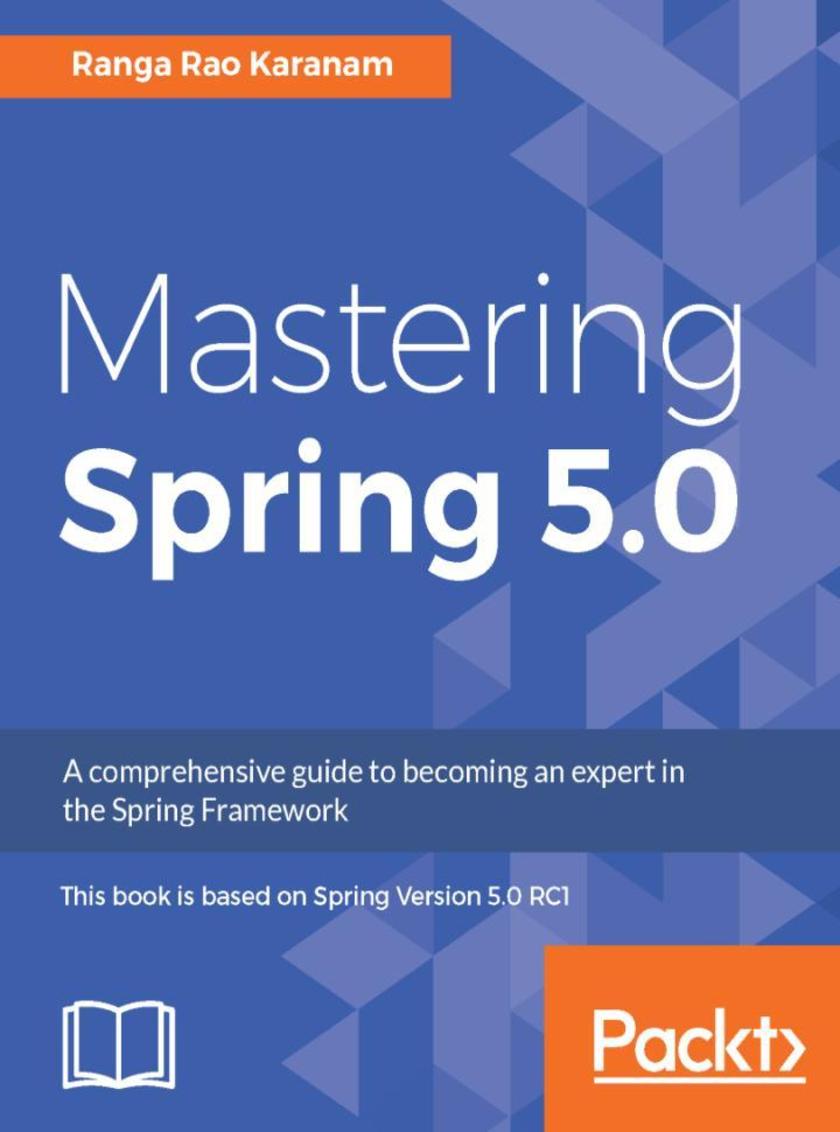
Mastering Spring 5.0
¥90.46
Develop cloud native applications with microservices using Spring Boot, Spring Cloud, and Spring Cloud Data Flow About This Book ? Explore the new features and components in Spring ? Evolve towards micro services and cloud native applications ? Gain powerful insights into advanced concepts of Spring and Spring Boot to develop applications more effectively ? Understand the basics of Kotlin and use it to develop a quick service with Spring Boot Who This Book Is For This book is for an experienced Java developer who knows the basics of Spring, and wants to learn how to use Spring Boot to build applications and deploy them to the cloud. What You Will Learn ? Explore the new features in Spring Framework 5.0 ? Build microservices with Spring Boot ? Get to know the advanced features of Spring Boot in order to effectively develop and monitor applications ? Use Spring Cloud to deploy and manage applications on the Cloud ? Understand Spring Data and Spring Cloud Data Flow ? Understand the basics of reactive programming ? Get to know the best practices when developing applications with the Spring Framework ? Create a new project using Kotlin and implement a couple of basic services with unit and integration testing In Detail Spring 5.0 is due to arrive with a myriad of new and exciting features that will change the way we’ve used the framework so far. This book will show you this evolution—from solving the problems of testable applications to building distributed applications on the cloud. The book begins with an insight into the new features in Spring 5.0 and shows you how to build an application using Spring MVC. You will realize how application architectures have evolved from monoliths to those built around microservices. You will then get a thorough understanding of how to build and extend microservices using Spring Boot. You will also understand how to build and deploy Cloud-Native microservices with Spring Cloud. The advanced features of Spring Boot will be illustrated through powerful examples. We will be introduced to a JVM language that’s quickly gaining popularity - Kotlin. Also, we will discuss how to set up a Kotlin project in Eclipse. By the end of the book, you will be equipped with the knowledge and best practices required to develop microservices with the Spring Framework. Style and Approach This book follows an end-to-end tutorial approach with lots of examples and sample applications, covering the major building blocks of the Spring framework.
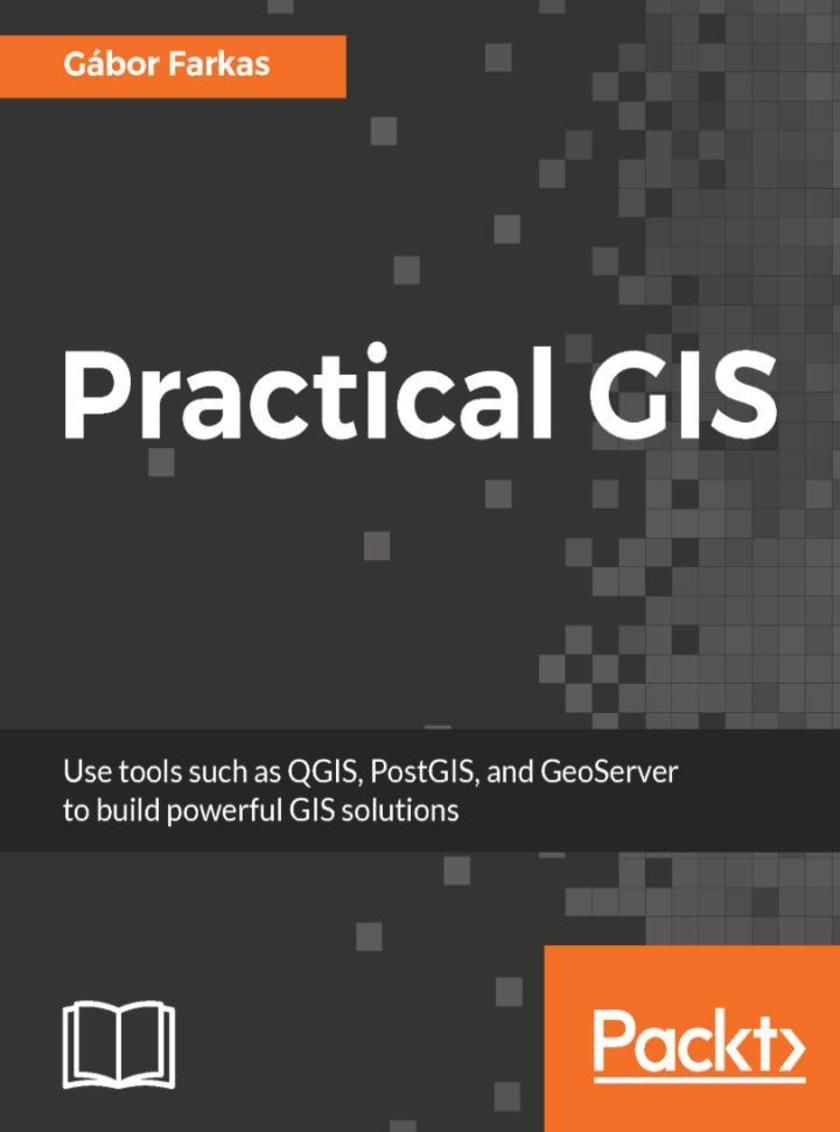
Practical GIS
¥90.46
Learn the basics of Geographic Information Systems by solving real-world problems with powerful open source tools About This Book ? This easy-to-follow guide allows you to manage and analyze geographic data with ease using open source tools ? Publish your geographical data online ? Learn the basics of geoinformatics in a practical way by solving problems Who This Book Is For The book is for IT professionals who have little or no knowledge of GIS. It’s also useful for those who are new to the GIS field who don’t want to spend a lot of money buying licenses of commercial tools and training. What You Will Learn ? Collect GIS data for your needs ? Store the data in a PostGIS database ? Exploit the data using the power of the GIS queries ? Analyze the data with basic and more advanced GIS tools ? Publish your data and share it with others ? Build a web map with your published data In Detail The most commonly used GIS tools automate tasks that were historically done manually—compiling new maps by overlaying one on top of the other or physically cutting maps into pieces representing specific study areas, changing their projection, and getting meaningful results from the various layers by applying mathematical functions and operations. This book is an easy-to-follow guide to use the most matured open source GIS tools for these tasks. We’ll start by setting up the environment for the tools we use in the book. Then you will learn how to work with QGIS in order to generate useful spatial data. You will get to know the basics of queries, data management, and geoprocessing. After that, you will start to practice your knowledge on real-world examples. We will solve various types of geospatial analyses with various methods. We will start with basic GIS problems by imitating the work of an enthusiastic real estate agent, and continue with more advanced, but typical tasks by solving a decision problem. Finally, you will find out how to publish your data (and results) on the web. We will publish our data with QGIS Server and GeoServer, and create a basic web map with the API of the lightweight Leaflet web mapping library. Style and approach The book guides you step by step through each of the core concepts of the GIS toolkit, building an overall picture of its capabilities. This guide approaches the topic systematically, allowing you to build upon what you learned in previous chapters. By the end of this book, you’ll have an understanding of the aspects of building a GIS system and will be able to take that knowledge with you to whatever project calls for it.
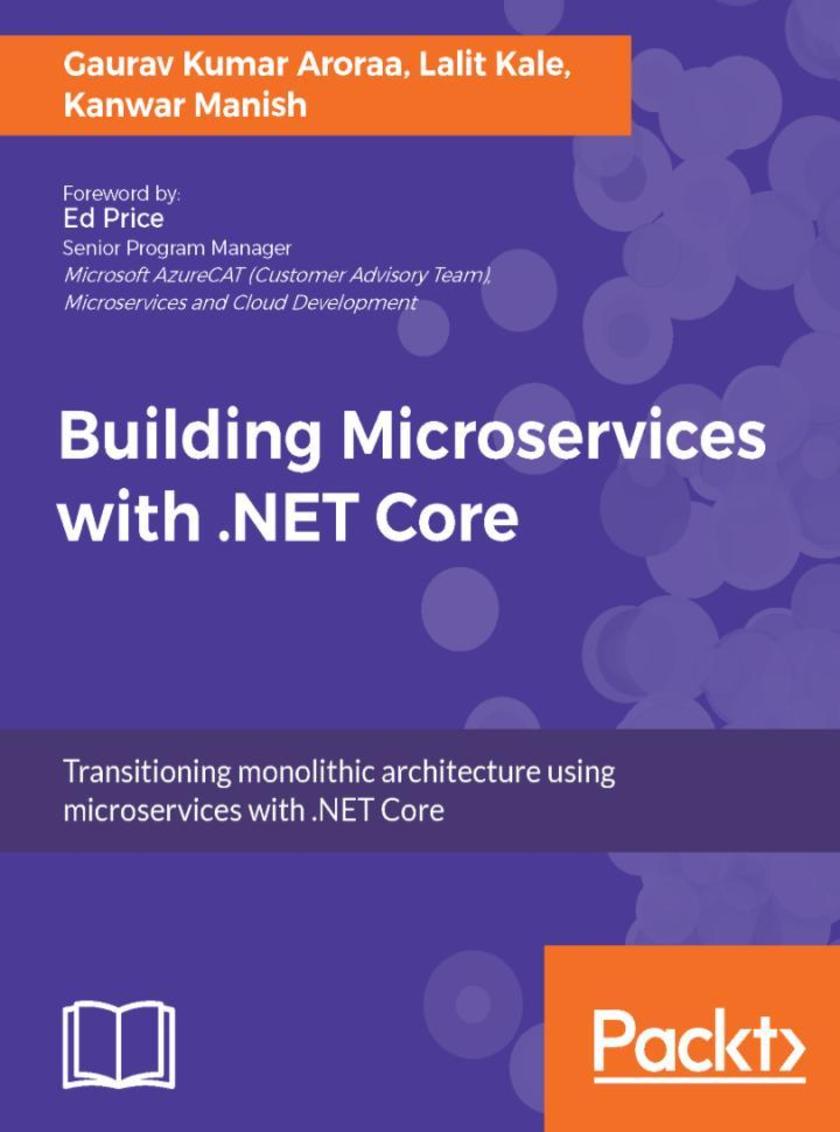
Building Microservices with .NET Core
¥80.65
Architect your .NET applications by breaking them into really small pieces—microservices—using this practical, example-based guide About This Book ? Start your microservices journey and understand a broader perspective of microservices development ? Build, deploy, and test microservices using ASP.Net MVC, Web API, and Microsoft Azure Cloud ? Get started with reactive microservices and understand the fundamentals behind it Who This Book Is For This book is for .NET Core developers who want to learn and understand microservices architecture and implement it in their .NET Core applications. It’s ideal for developers who are completely new to microservices or have just a theoretical understanding of this architectural approach and want to gain a practical perspective in order to better manage application complexity. What You Will Learn ? Compare microservices with monolithic applications and SOA ? Identify the appropriate service boundaries by mapping them to the relevant bounded contexts ? Define the service interface and implement the APIs using ASP.NET Web API ? Integrate the services via synchronous and asynchronous mechanisms ? Implement microservices security using Azure Active Directory, OpenID Connect, and OAuth 2.0 ? Understand the operations and scaling of microservices in .NET Core ? Understand the testing pyramid and implement consumer-driven contract using pact net core ? Understand what the key features of reactive microservices are and implement them using reactive extension In Detail Microservices is an architectural style that promotes the development of complex applications as a suite of small services based on business capabilities. This book will help you identify the appropriate service boundaries within the business. We'll start by looking at what microservices are, and what the main characteristics are. Moving forward, you will be introduced to real-life application scenarios, and after assessing the current issues, we will begin the journey of transforming this application by splitting it into a suite of microservices. You will identify the service boundaries, split the application into multiple microservices, and define the service contracts. You will find out how to configure, deploy, and monitor microservices, and configure scaling to allow the application to quickly adapt to increased demand in the future. With an introduction to the reactive microservices, you strategically gain further value to keep your code base simple, focusing on what is more important rather than the messy asynchronous calls. Style and approach This guide serves as a stepping stone that helps .NET Core developers in their microservices architecture. This book provides just enough theory to understand the concepts and apply the examples.
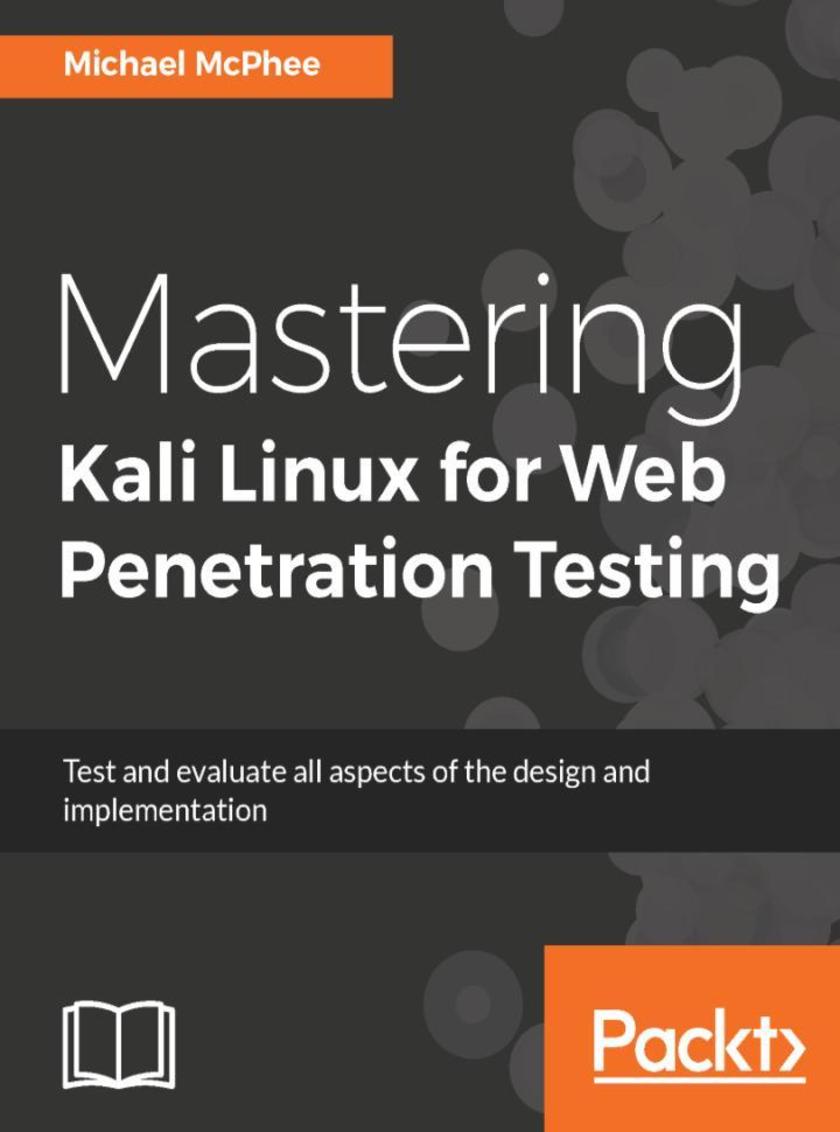
Mastering Kali Linux for Web Penetration Testing
¥90.46
Master the art of exploiting advanced web penetration techniques with Kali Linux 2016.2 About This Book ? Make the most out of advanced web pen-testing techniques using Kali Linux 2016.2 ? Explore how Stored (a.k.a. Persistent) XSS attacks work and how to take advantage of them ? Learn to secure your application by performing advanced web based attacks. ? Bypass internet security to traverse from the web to a private network. Who This Book Is For This book targets IT pen testers, security consultants, and ethical hackers who want to expand their knowledge and gain expertise on advanced web penetration techniques. Prior knowledge of penetration testing would be beneficial. What You Will Learn ? Establish a fully-featured sandbox for test rehearsal and risk-free investigation of applications ? Enlist open-source information to get a head-start on enumerating account credentials, mapping potential dependencies, and discovering unintended backdoors and exposed information ? Map, scan, and spider web applications using nmap/zenmap, nikto, arachni, webscarab, w3af, and NetCat for more accurate characterization ? Proxy web transactions through tools such as Burp Suite, OWASP's ZAP tool, and Vega to uncover application weaknesses and manipulate responses ? Deploy SQL injection, cross-site *ing, Java vulnerabilities, and overflow attacks using Burp Suite, websploit, and SQLMap to test application robustness ? Evaluate and test identity, authentication, and authorization schemes and sniff out weak cryptography before the black hats do In Detail You will start by delving into some common web application architectures in use, both in private and public cloud instances. You will also learn about the most common frameworks for testing, such as OWASP OGT version 4, and how to use them to guide your efforts. In the next section, you will be introduced to web pentesting with core tools and you will also see how to make web applications more secure through rigorous penetration tests using advanced features in open source tools. The book will then show you how to better hone your web pentesting skills in safe environments that can ensure low-risk experimentation with the powerful tools and features in Kali Linux that go beyond a typical *-kiddie approach. After establishing how to test these powerful tools safely, you will understand how to better identify vulnerabilities, position and deploy exploits, compromise authentication and authorization, and test the resilience and exposure applications possess. By the end of this book, you will be well-versed with the web service architecture to identify and evade various protection mechanisms that are used on the Web today. You will leave this book with a greater mastery of essential test techniques needed to verify the secure design, development, and operation of your customers' web applications. Style and approach An advanced-level guide filled with real-world examples that will help you take your web application’s security to the next level by using Kali Linux 2016.2.
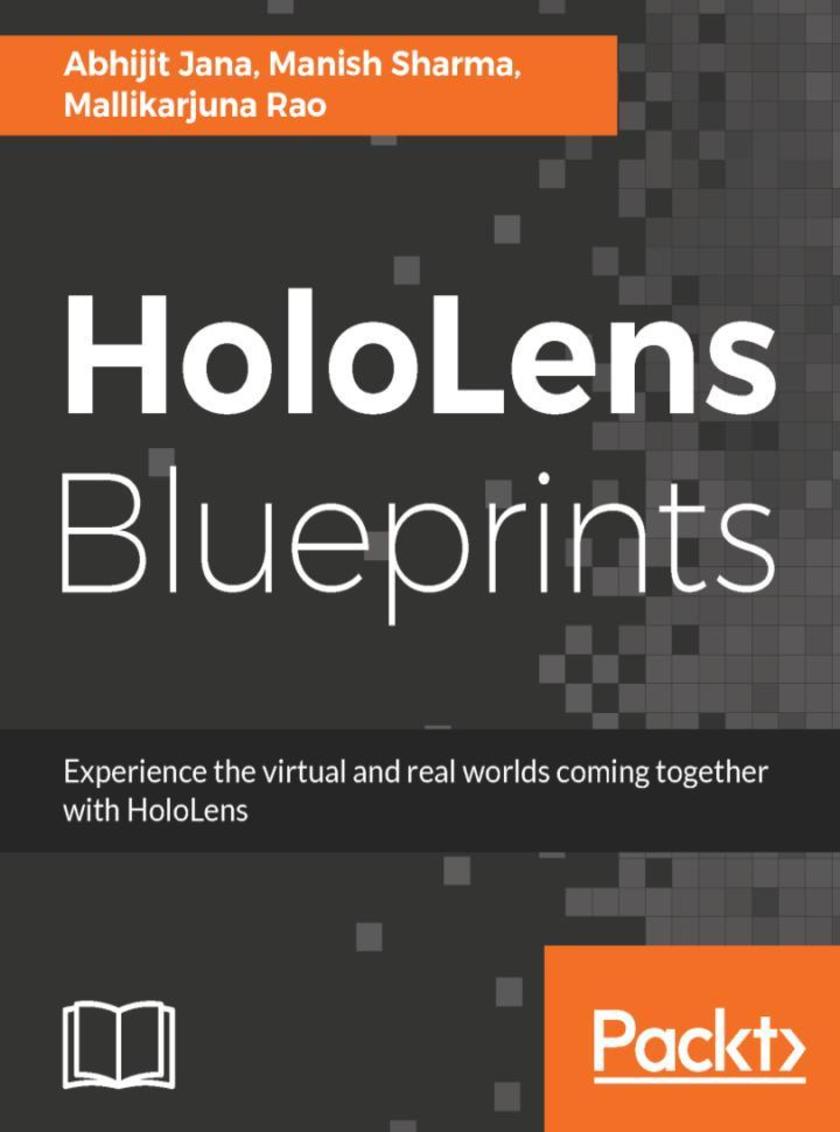
HoloLens Blueprints
¥80.65
Unveil the world of mixed reality with HoloLens About This Book ? Bring holographic insights to existing line-of-business applications, tools, and workflows ? Focus on developing end-to-end realistic holographic application. ? Build interactive model *s and test them in Unity3D and holographic emulators Who This Book Is For This book is targeted at developers and designers working on mixed-reality developments for complex integrated scenarios using HoloLens. What You Will Learn ? Interact with holograms using different interaction models ? Develop your first holographic app ? Integrate holographic applications with cloud systems ? Visualize data feeds coming from the cloud through holograms ? Manage the application distribution of enterprise-enabled HoloLens ? Integrate HoloLens applications with services deployed on Azure ? Identify and create 3D Assets and Scenes ? Use HoloLens to explore the Internet of Things In Detail Do you want to create stunning applications with HoloLens? Are you a developer who is fascinated with Microsoft HoloLens and its capabilities? If so, this is the book for you. This book introduces and demystifies the HoloLens platform and shows you different ways of interaction with computers (mixed-reality). You will start your mixed-reality journey by understanding different types of digital reality. You will learn to build your first holographic app. Also, you will understand holographic application integration possibilities within Line of Business Applications using Azure. Moving ahead, you will create Integrated Solutions using IoT with HoloLens. Gradually you'll learn how to create and deploy apps on a device. You will learn to publish application to the store; if you are an enterprise developer, you will also manage and distribute applications for enterprise-enabled or domain-joined HoloLens. Finally, you will develop an end-to-end realistic holographic app, ranging from scenario identification to sketching, development, deployment, and, finally, production. Style and approach The book is a project-based guide to help you to create some really astonishing mixed-reality applications. It will provide end-to-end solutions and enable you to build stunning applications for HoloLens.
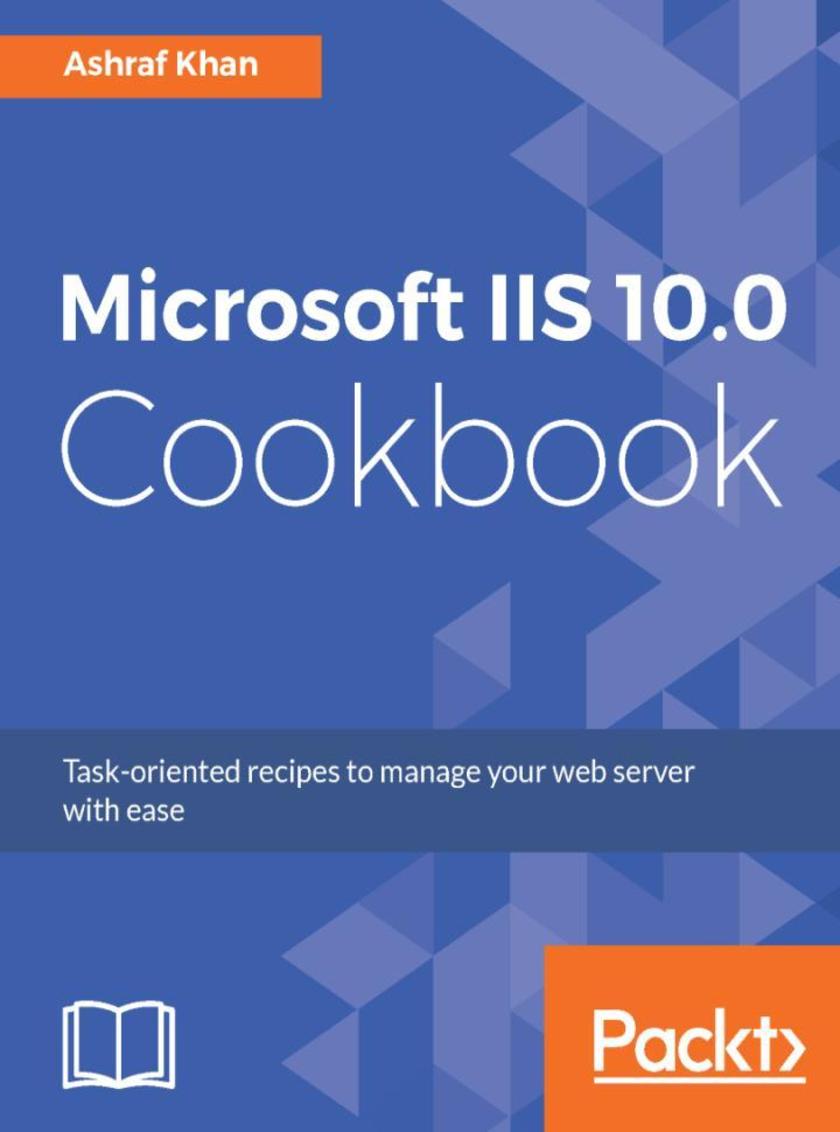
Microsoft IIS 10.0 Cookbook
¥90.46
Over 60 recipes to install, configure, and manage your IIS 10.0 About This Book ? Provide a secure, easy-to-manage extensible platform for hosting your websites ? Leverage IIS 10.0 in order to deploy web site in seconds ? Integrate Windows and Nano Server 2016 and automate it with PowerShell ? Recipes to Manage and monitor your IIS 10.0 Who This Book Is For If you are an administrator or web developer with a basic (or no) knowledge of Microsoft IIS and want to set up your own web server, then this is the book for you. What You Will Learn ? Integrate IIS 10.0 on Windows server 2016 ? Host multiple websites and Wildcard Host on IIS 10.0 ? Deploy and administrate IIS 10.0 on Nano Server. ? IIS administration with Powershell. ? Manage and troubleshoot IIS 10.0 In Detail This book will start with customizing your IIS 10 to various platforms/OS and tune it according to your business requirements. Moving on, we will focus on the functionalities of core fundamentals and perform practical scenarios in order to maximize the use of a reliable web server. Going further we will be covering topics like IIS 10 architecture, IIS modules,hosting web server platforms, virtual directories along with web site deployment, ports, enhanced security. We will also cover new features of IIS 10 like integration with Windows Server 2016 and Nano Server, HTTP/2, PowerShell 5 cmdlets etc . Towards the end, we will cover troubleshooting & diagnostic techniques of IIS 10. By the end of this book you will be well versed with maximizing the reliability of your webserver and will have immense knowledge in using IIS 10 effectively Style and approach A set of exciting recipes on using Microsoft IIS 10.0 effectively..
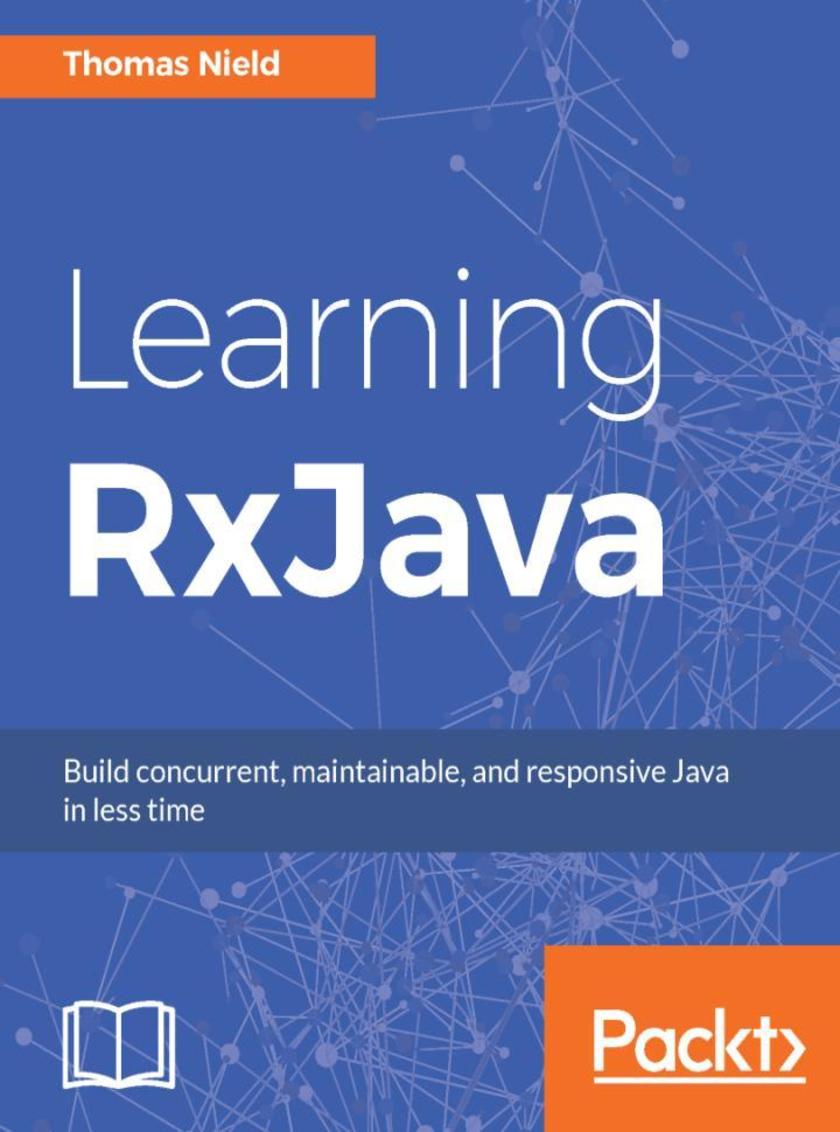
Learning RxJava
¥80.65
Reactive Programming with Java and ReactiveX About This Book ? Explore the essential tools and operators RxJava provides, and know which situations to use them in ? Delve into Observables and Subscribers, the core components of RxJava used for building scalable and performant reactive applications ? Delve into the practical implementation of tools to effectively take on complex tasks such as concurrency and backpressure Who This Book Is For The primary audience for this book is developers with at least a fundamental mastery of Java. Some readers will likely be interested in RxJava to make programs more resilient, concurrent, and scalable. Others may be checking out reactive programming just to see what it is all about, and to judge whether it can solve any problems they may have. What You Will Learn ? Learn the features of RxJava 2 that bring about many significant changes, including new reactive types such as Flowable, Single, Maybe, and Completable ? Understand how reactive programming works and the mindset to "think reactively" ? Demystify the Observable and how it quickly expresses data and events as sequences ? Learn the various Rx operators that transform, filter, and combine data and event sequences ? Leverage multicasting to push data to multiple destinations, and cache and replay them ? Discover how concurrency and parallelization work in RxJava, and how it makes these traditionally complex tasks trivial to implement ? Apply RxJava and Retrolambda to the Android domain to create responsive Android apps with better user experiences ? Use RxJava with the Kotlin language to express RxJava more idiomatically with extension functions, data classes, and other Kotlin features In Detail RxJava is a library for composing asynchronous and event-based programs using Observable sequences for the JVM, allowing developers to build robust applications in less time. Learning RxJava addresses all the fundamentals of reactive programming to help readers write reactive code, as well as teach them an effective approach to designing and implementing reactive libraries and applications. Starting with a brief introduction to reactive programming concepts, there is an overview of Observables and Observers, the core components of RxJava, and how to combine different streams of data and events together. You will also learn simpler ways to achieve concurrency and remain highly performant, with no need for synchronization. Later on, we will leverage backpressure and other strategies to cope with rapidly-producing sources to prevent bottlenecks in your application. After covering custom operators, testing, and debugging, the book dives into hands-on examples using RxJava on Android as well as Kotlin. Style and approach This book will be different from other Rx books, taking an approach that comprehensively covers Rx concepts and practical applications.
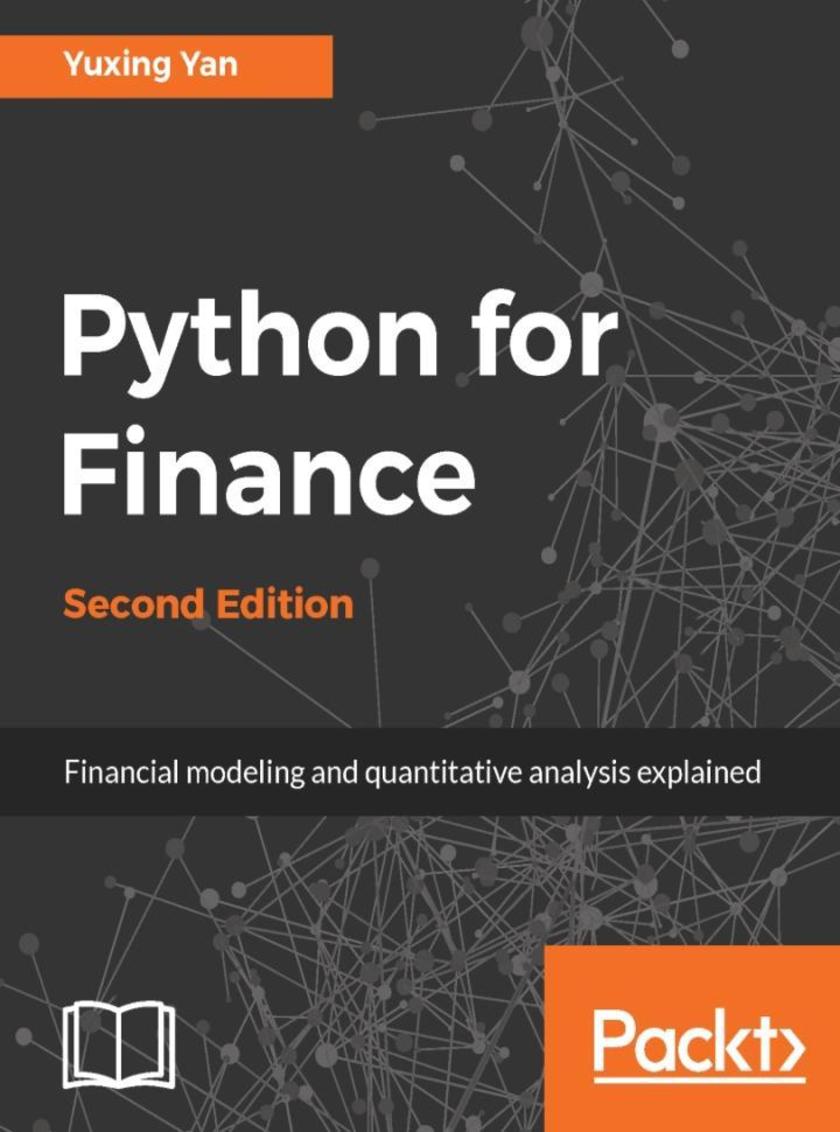
Python for Finance - Second Edition
¥90.46
Learn and implement various Quantitative Finance concepts using the popular Python libraries About This Book ? Understand the fundamentals of Python data structures and work with time-series data ? Implement key concepts in quantitative finance using popular Python libraries such as NumPy, SciPy, and matplotlib ? A step-by-step tutorial packed with many Python programs that will help you learn how to apply Python to finance Who This Book Is For This book assumes that the readers have some basic knowledge related to Python. However, he/she has no knowledge of quantitative finance. In addition, he/she has no knowledge about financial data. What You Will Learn ? Become acquainted with Python in the first two chapters ? Run CAPM, Fama-French 3-factor, and Fama-French-Carhart 4-factor models ? Learn how to price a call, put, and several exotic options ? Understand Monte Carlo simulation, how to write a Python program to replicate the Black-Scholes-Merton options model, and how to price a few exotic options ? Understand the concept of volatility and how to test the hypothesis that volatility changes over the years ? Understand the ARCH and GARCH processes and how to write related Python programs In Detail This book uses Python as its computational tool. Since Python is free, any school or organization can download and use it. This book is organized according to various finance subjects. In other words, the first edition focuses more on Python, while the second edition is truly trying to apply Python to finance. The book starts by explaining topics exclusively related to Python. Then we deal with critical parts of Python, explaining concepts such as time value of money stock and bond evaluations, capital asset pricing model, multi-factor models, time series analysis, portfolio theory, options and futures. This book will help us to learn or review the basics of quantitative finance and apply Python to solve various problems, such as estimating IBM’s market risk, running a Fama-French 3-factor, 5-factor, or Fama-French-Carhart 4 factor model, estimating the VaR of a 5-stock portfolio, estimating the optimal portfolio, and constructing the efficient frontier for a 20-stock portfolio with real-world stock, and with Monte Carlo Simulation. Later, we will also learn how to replicate the famous Black-Scholes-Merton option model and how to price exotic options such as the average price call option. Style and approach This book takes a step-by-step approach in explaining the libraries and modules in Python, and how they can be used to implement various aspects of quantitative finance. Each concept is explained in depth and supplemented with code examples for better understanding.




 购物车
购物车 个人中心
个人中心



